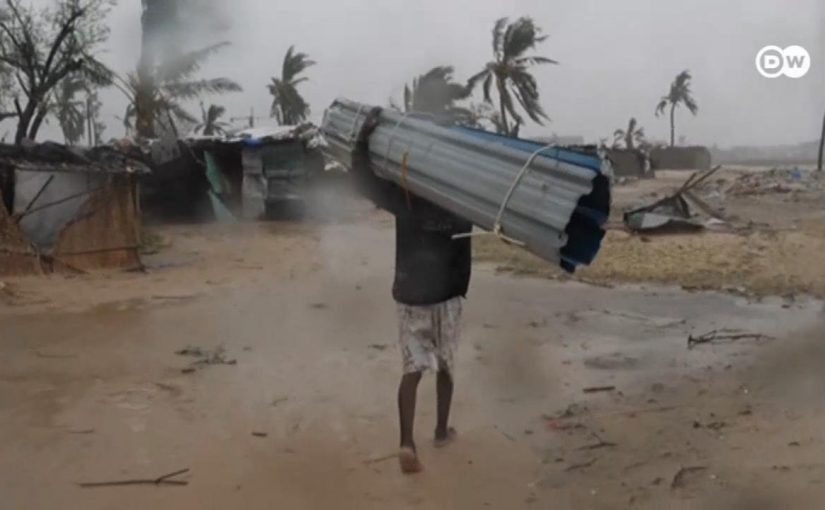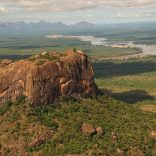Mozambique: Zinave National Park receives 10 black rhinos
Trees are a refuge after cyclone Eloise passes through, two years after Idai

FILE PHOTO - For illustration purposes only. [File photo: DW]
After surviving the severe shock of Cyclone Idai in 2019 and the Chalane storm in December, Judite Marcelo relived the anguish to save herself from the floods Cyclone Eloise brought upon her village in Nhansatua, central Mozambique.
Judite and her daughters survived, but as with Idai, again lost everything, and again will have to start over from scratch.
This time, the 32-year-old peasant farmer survived by first clinging to the branches of the tree above the termite nest which usually looms above the backyard of her precarious home.
She had to swim between perches several times to prevent water from dragging her daughters off, while holding on to “all the clothes and food” from her hut, after it was washed away by the current.
“I was in the vegetable garden, when the children started to call me, frightened, saying that the water was flooding the yard,” Judite told Lusa.
She only had time to save herself and her daughters. They survived since Friday, first perched on top of a termite nest, but with the waters advancing inexorably, Judite had to strike out across the river, along with her four daughters.
“We were already in danger in the ‘mumuche’ [bush], so I put two of the children in my lap and swam with the other two holding onto one hand. I swam until we were rescued by a canoe which was helping people to cross the river,” she said.
Judite then walked 10 kilometres in heavy rain until she arrived, on Saturday, at the shelter in Tica, in the upper part of Nhamatanda district.
Like Judite Marcelo and her family, thousands of people have, since Friday, been stricken by the floods resulting from heavy rains and discharges from dams, inundating numerous neighbourhoods and fields in the lower areas of Nhansatua and Nhaminde, causing a new wave of displaced people and affecting areas where the victims of Cyclone Idai have resettled.
After breaking their banks, the water reached villages, catching residents who were in the fields by surprise. They fled, leaving behind everything they had recovered in the almost two years since one of the worst storms ever in the Southern hemisphere.
Cyclone Idai killed 603 people in Mozambique alone.
Nhansatua community leader Carlitos Beleza goes through the Tica shelter centre from end to end, telling residents of his village that people remain besieged on termite mounds in his village, and that they need help.
“When the water started to rise, we ran to warn the population. They had to leave. Anyone who was too slow stayed there for good,” Carlitos said. There are shepherds and smallholders still stranded there today, he reports. “The others who are arriving, in ones and twos, managed to escape.”
District officials in Nhamatanda estimate that 31,300 people are suffering from the combined effects of January’s heavy rains and the passage of Cyclone Eloise. Of those, about 200 families are at the Tica shelter centre.
The repeated suffering, year after year, has made João Chimica, a peasant farmer from Nhansatua, decide to leave the low-lying areas – more fertile land, maybe, but regularly flooded.
Now, he plans to settle in a safe area.
“I had packed my backpack and stuck it on the roof of the house, but with the approach of the water, I had to flee and leave everything. I couldn’t carry it on my head and make two swimming trips, of several kilometres, to save my daughters and wife,” Chimica told Lusa.
Cyclone Eloise, which struck Mozambique over the weekend, killed six and injured 12, the destruction caused by the storm’s winds and rain, or by flooding, affecting an estimated 176,000 people.
By André Catueira












Leave a Reply
Be the First to Comment!
You must be logged in to post a comment.
You must be logged in to post a comment.